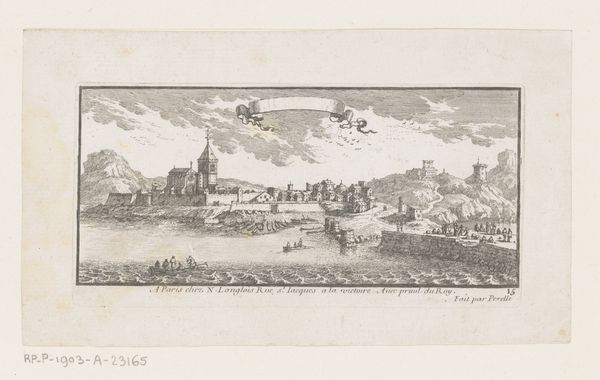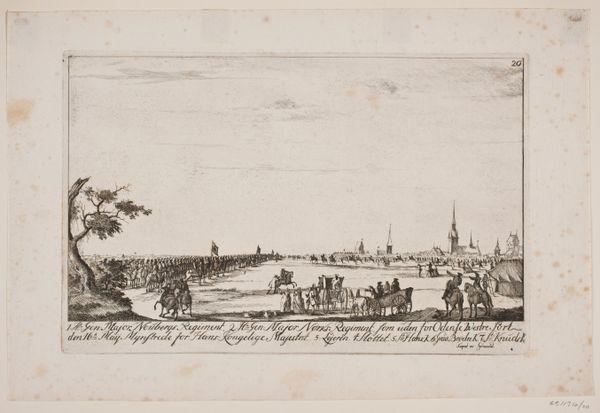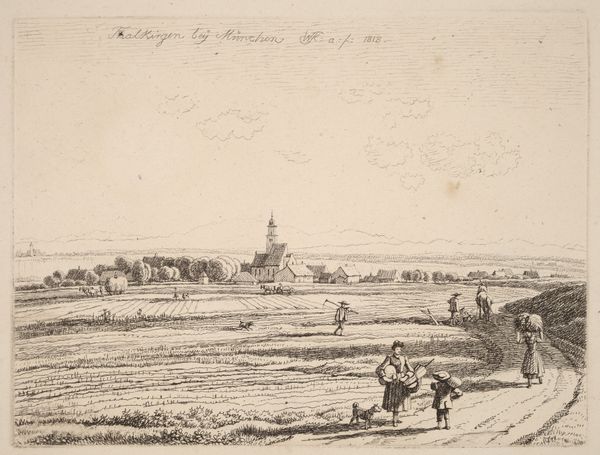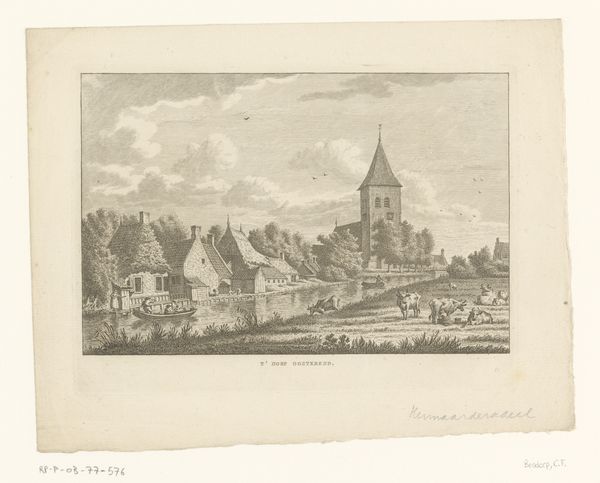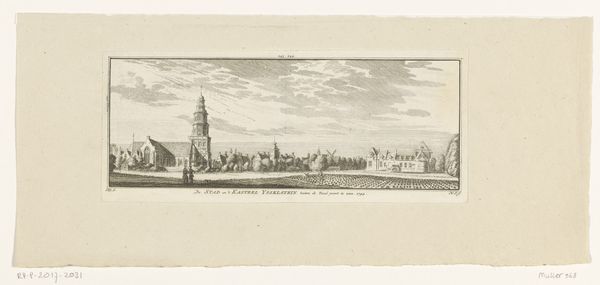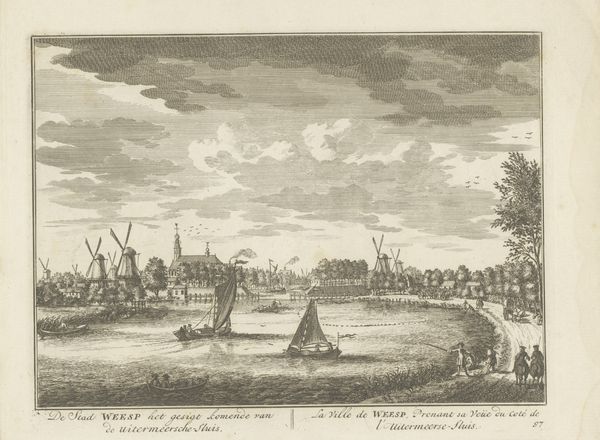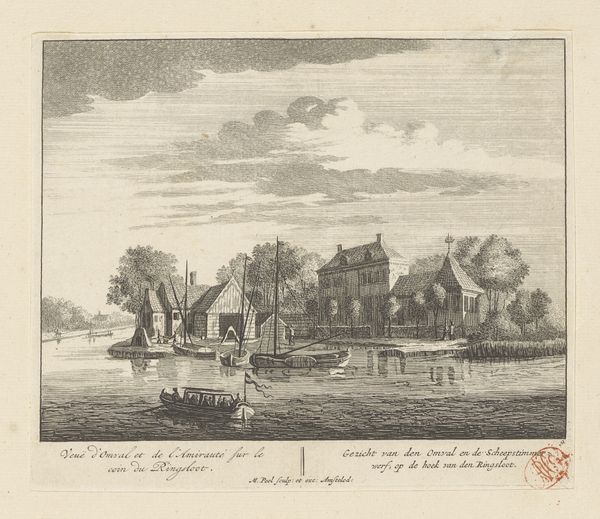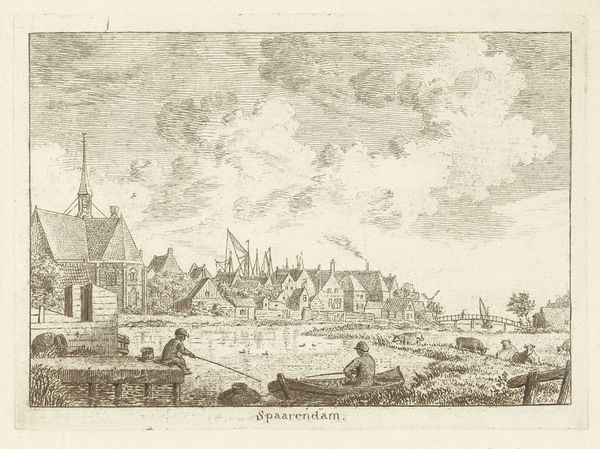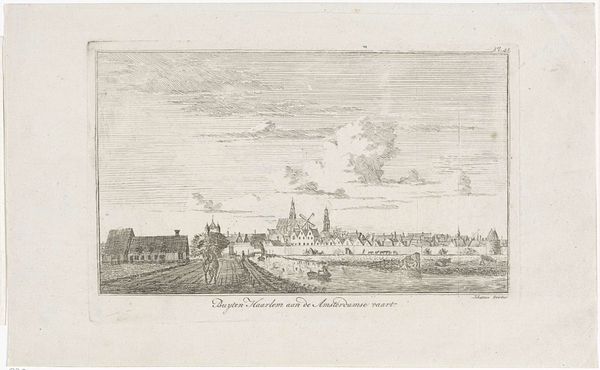
Dimensions: height 81 mm, width 213 mm
Copyright: Rijks Museum: Open Domain
Hendrik Spilman made this print of the village of Bodegraven in 1749. Its muted tones and quiet pastoral scene may not seem especially provocative to modern eyes, but it's worth considering how images of the Dutch landscape became newly charged with meaning in the mid-18th century. After decades of war and political upheaval, the Netherlands was experiencing a period of relative peace and prosperity. This print, with its emphasis on the everyday life of the village and a strong sense of place, reflects a growing interest in local identity and the unique character of the Dutch countryside. At the same time, the rising middle class began to exert new kinds of cultural influence. Prints like this one were becoming increasingly popular as affordable and accessible works of art that could be displayed in the home, and are part of a bigger story about the democratization of art. To understand the significance of this image more fully, we can look at period sources like newspapers, pamphlets, and travel guides. These can help us better understand the values and aspirations of Dutch society at this time.
Comments
No comments
Be the first to comment and join the conversation on the ultimate creative platform.
